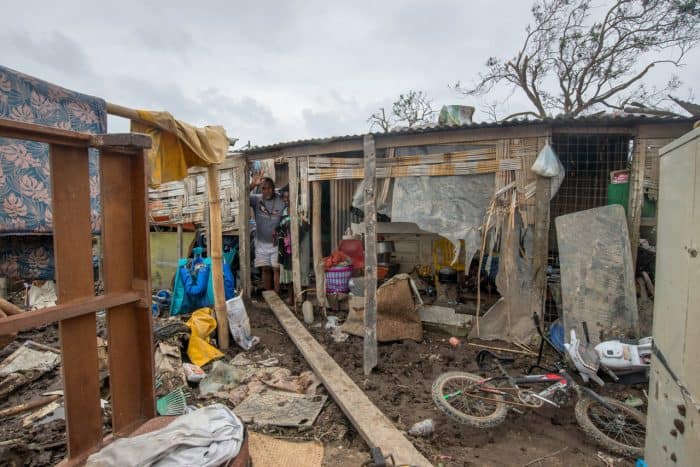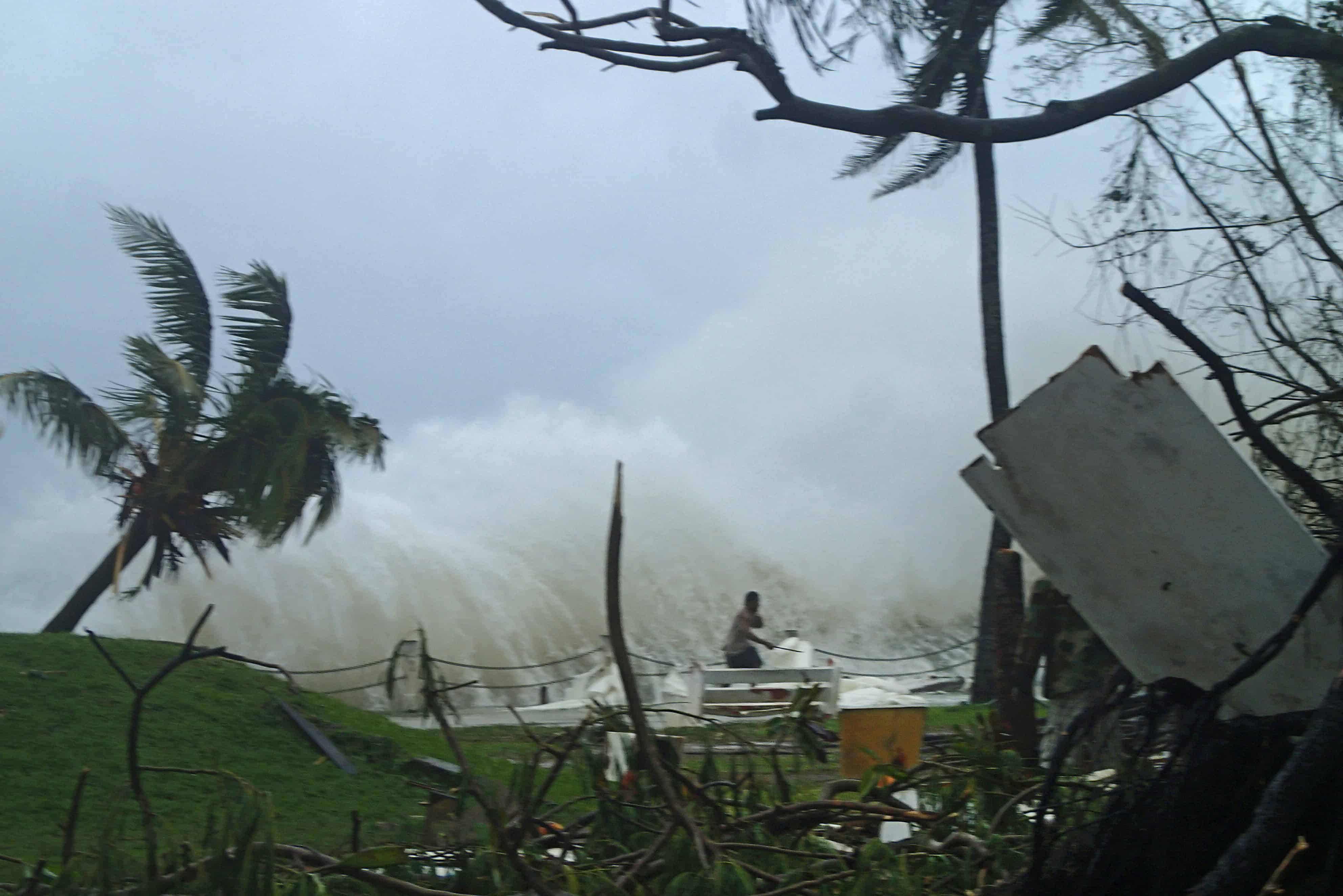The official death toll in the capital Port Vila stood at six, although experts said this was likely a fraction of the fatalities nationwide after reports of entire villages “blown away” when the cyclone swept through.
Communications were still down across most of the archipelago’s 80 islands on Sunday, although the airport in Port Vila reopened with limited facilities to allow in much-needed aid.
Two Australian airforce planes landed with food, shelter and medicine while a New Zealand military aircraft also arrived loaded with eight tons of tarpaulins, water containers, chainsaw packs and generators.
Commercial flights were scheduled to resume on Monday.
The government said it was still trying to assess the scale of the disaster unleashed when Super Cyclone Pam, a maximum Category 5 system, vented its fury on Friday night, with winds reaching 320 kilometers (200 miles) an hour.
The U.N. had unconfirmed reports that the cyclone had killed 44 people in one province alone and Oxfam said the destruction in Port Vila was massive, with 90 percent of houses damaged.

While the focus was on Vanuatu, Tuvalu — some 1,550 kilometers (960 miles) to the northeast — also saw thousands forced from their homes.
“This is likely to be one of the worst disasters ever seen in the Pacific, the scale of humanitarian need will be enormous…entire communities have been blown away,” said Oxfam’s Vanuatu director Colin Collet van Rooyen.
Vanuatu Red Cross president Hannington Alatoa said: “Effectively the whole country…is flattened.”
‘A monster’
Pictures from Port Vila showed streets littered with debris, cars crushed by trees, buildings blown to pieces and yachts washed inland.
Vanuatu’s President Baldwin Lonsdale described the storm as “a monster that has devastated our country,” his voice breaking as he described Port Vila’s devastation.
“Most of the buildings have been destroyed, many houses have been destroyed, school, health facilities have been destroyed,” he told the BBC from Japan, where he was attending a disaster management conference when the cyclone hit.
Vanuatu police commissioner Colonel Job Esau said some areas of the capital — such as shopping districts and the waterfront — had been deemed off-limits to try to stop looting through the night.
Ivan Oswald, an Australian who has lived in Vanuatu for 13 years, said he had seen “opportunistic looting” of houses and boats.
“It’s a sad thing…I’ve seen some people running around and started looting. Resorts are being pilfered. It’s just getting a bit lawless at the moment,” he told AFP by phone.
“People are behaving differently. Some are fixing things, some are unable to, they are just a little bit shell-shocked.”
UNICEF spokeswoman Alice Clements described “15 to 30 minutes of absolute terror” as the cyclone barrelled into the island, as the agency launched an appeal for $2 million of aid.
“People have no water, they have no power, this is a really desperate situation right now. People need help,” she told AFP.
World Vision spokeswoman Chloe Morrison said the situation also appeared grim for outlying islands in the nation of around 270,000, with homes decimated on the main island Efate which includes the capital.
“We’re seeing whole villages and houses just blown away,” she said.
‘No water’
Despite the problems, relief began to trickle in to Vanuatu, a day after President Lonsdale made an emotional call for international aid. World leaders, including Australia, Britain, New Zealand and the European Union, pledged relief as workers on the ground warned the death toll could rise because of poor food and water supplies.
IMF chief Christine Lagarde said the fund stood “prepared to assist Vanuatu with quick, unbureaucratic steps in dealing with the immediate aftermath of the catastrophe and rebuilding the economy.”
In Rome, Pope Francis at his weekly prayers pledged his “solidarity with the people of Vanuatu…I pray for the dead, the injured and the homeless.”
The Fiji-based head of delegation for the Red Cross in the Pacific told AFP she had spoken to a light aircraft pilot who flew Sunday to the southern island of Tanna, home to 34,000 people.
“He said all the corrugated iron structures he saw in the western part of Tanna were destroyed and all concrete buildings were without roofs,” Aurelia Balpe said, adding that there were unconfirmed reports of two dead.
“Shelter and food are the major issues,” she added. “We are still struggling to understand the number of casualties.”
Save the Children’s head of humanitarian response Nichola Krey raised fears of food shortages in the subsistence economy and said conditions in evacuation centres were challenging.
“Many of the evacuation centers have lots of women and young children sleeping cheek-by-jowl, so health and protection will by key in the coming weeks,” she said.
New Zealand also flew supplies to the Pacific island of Tuvalu, where Prime Minister Enele Sopoaga said 45 percent of the 11,000 population had been displaced.
Other islands, including the Solomon Islands and Kiribati were both battered by the storm, although not to the extent of their neighbor.








